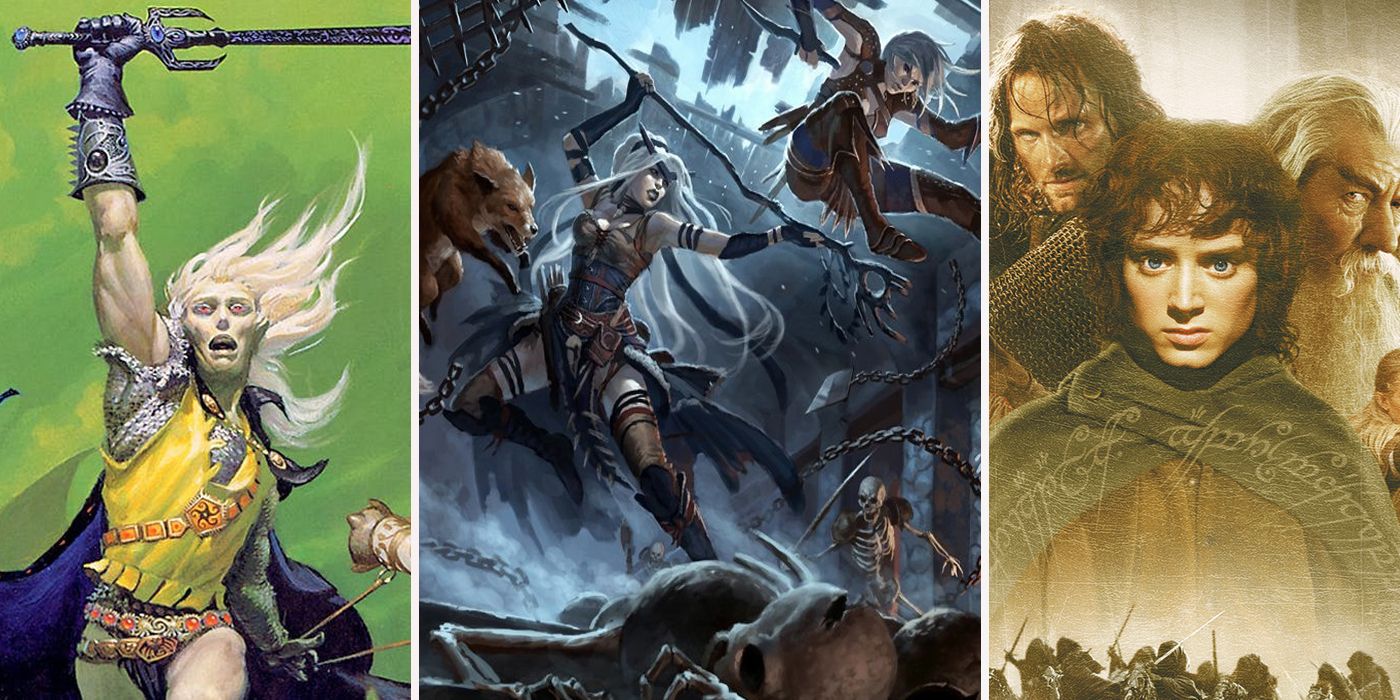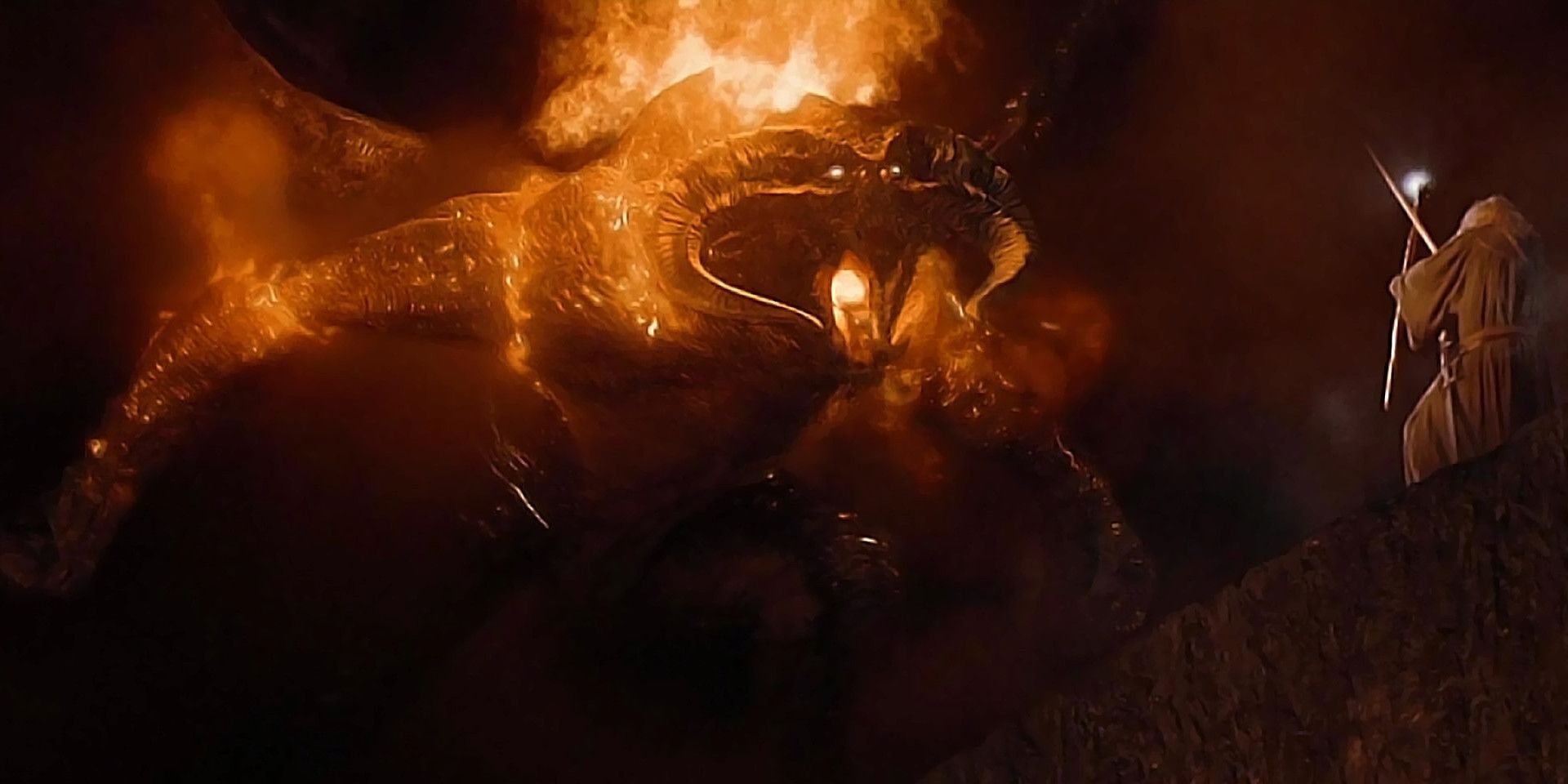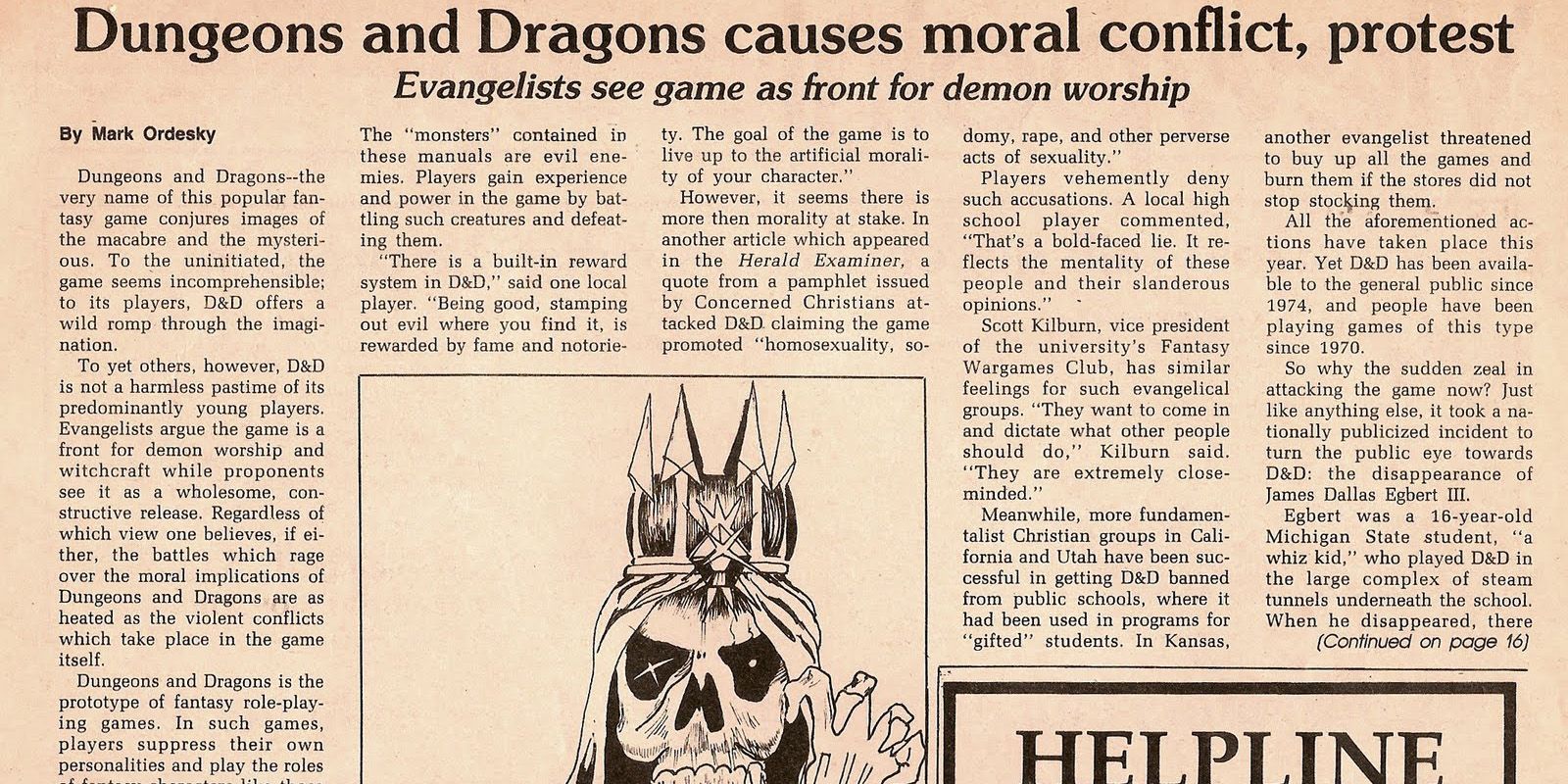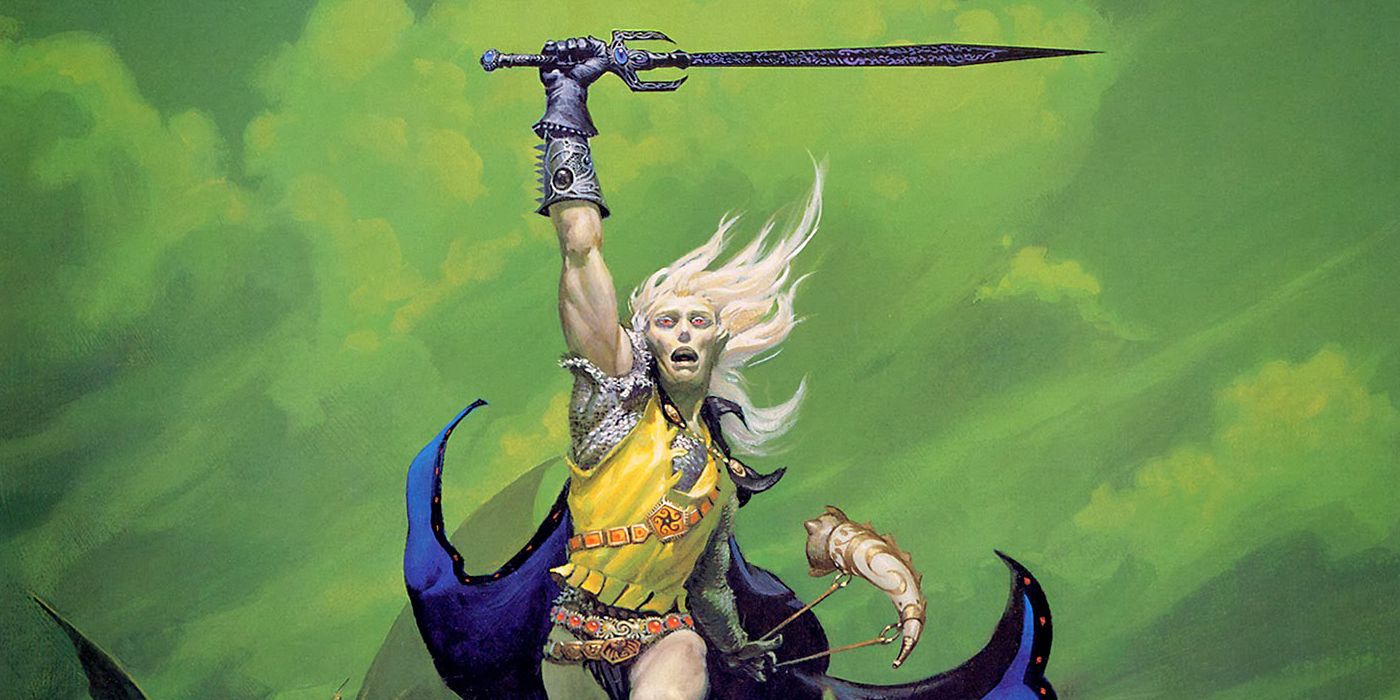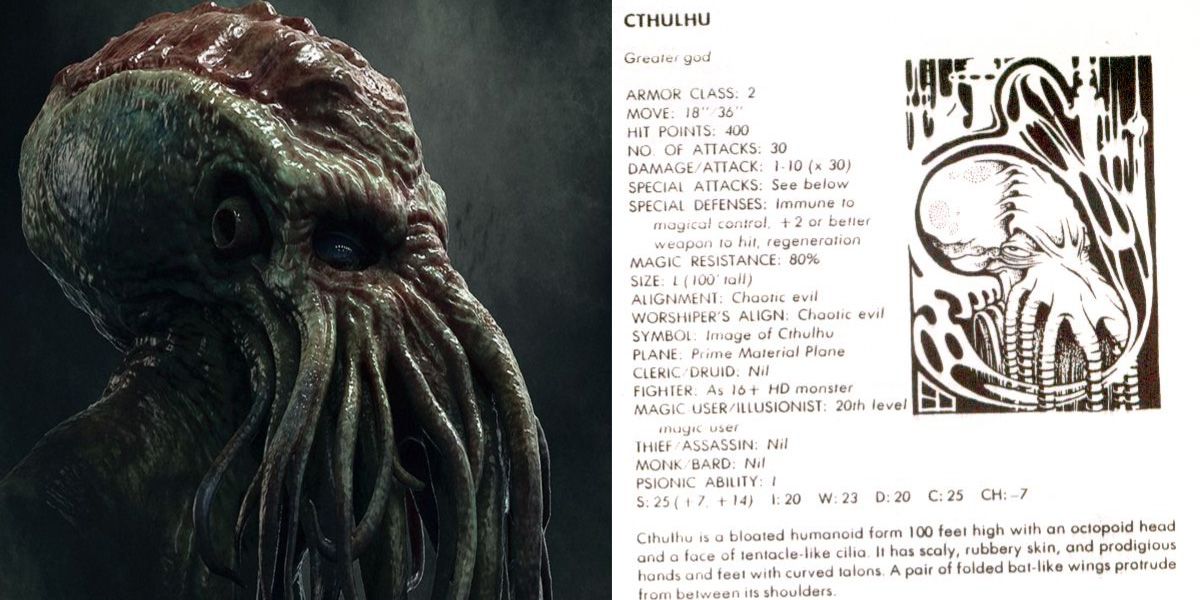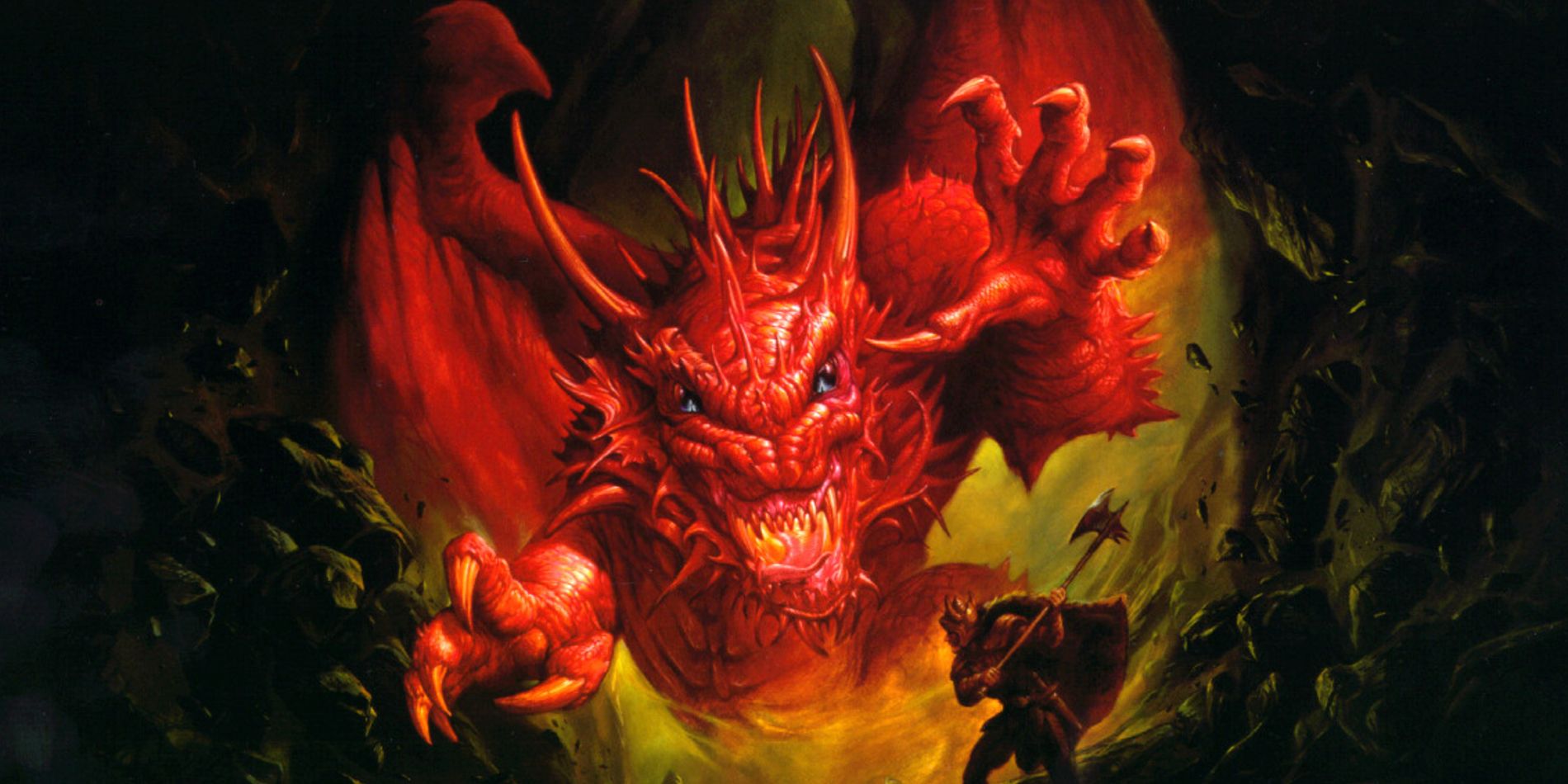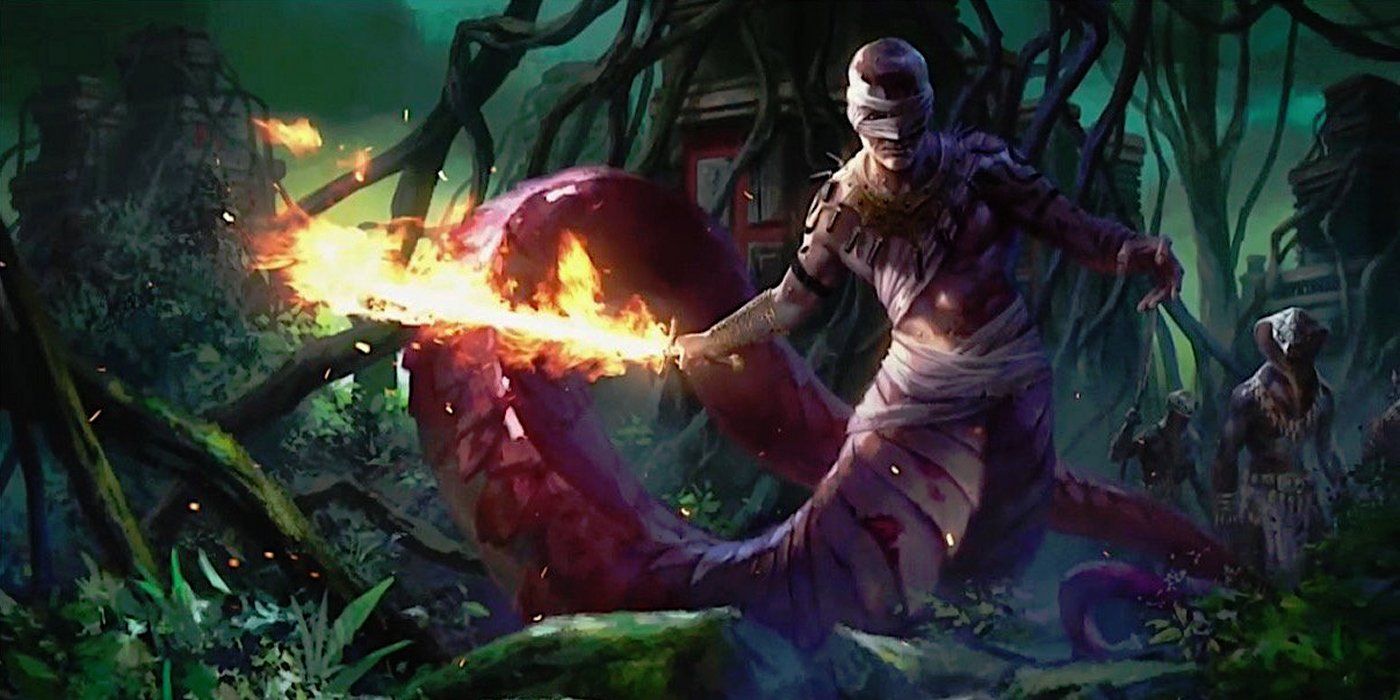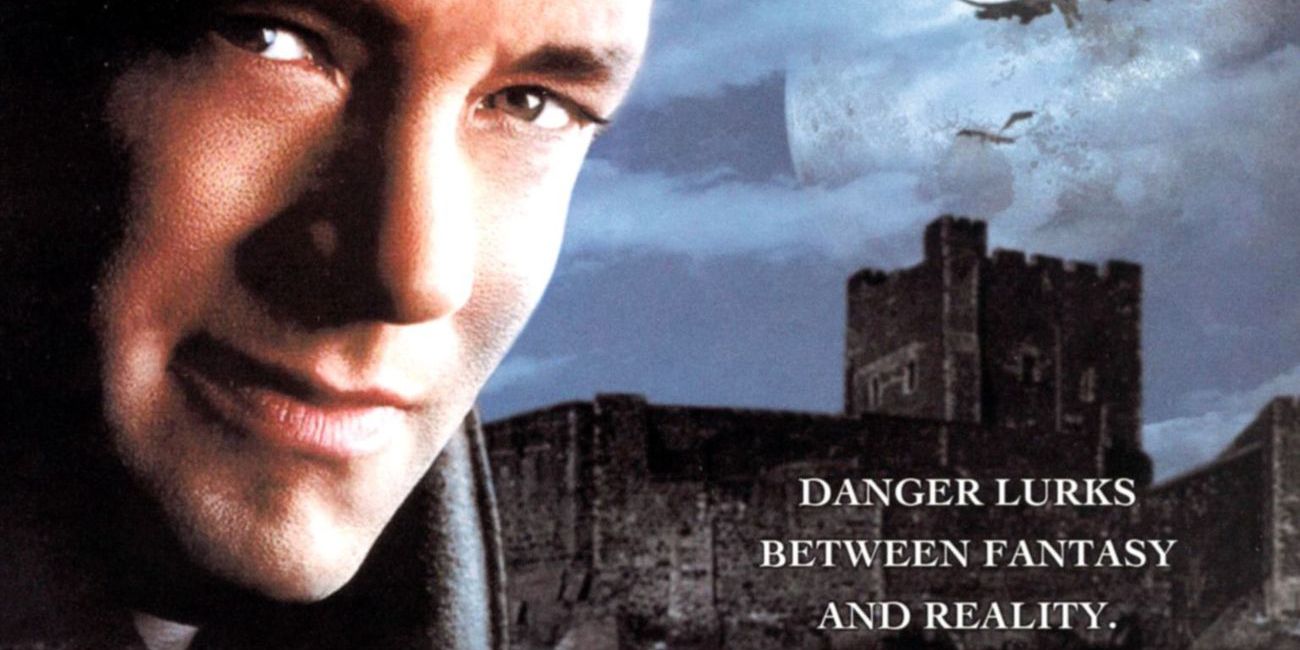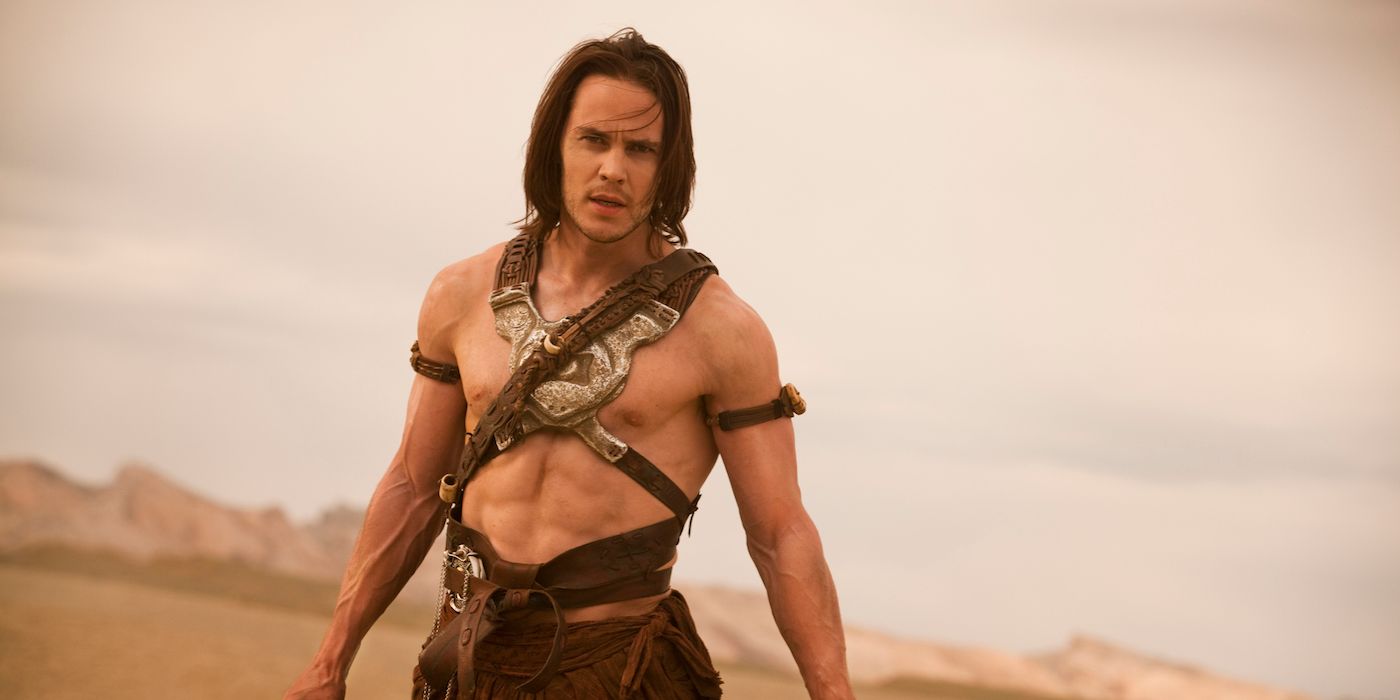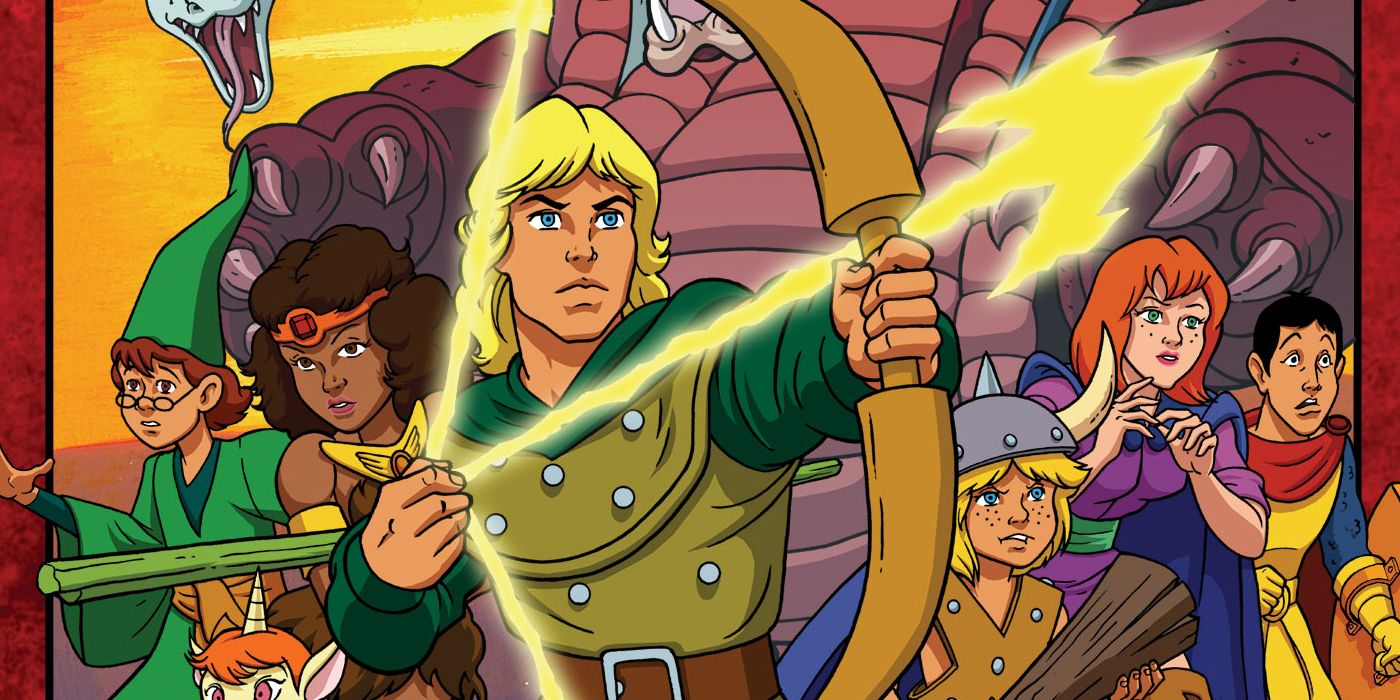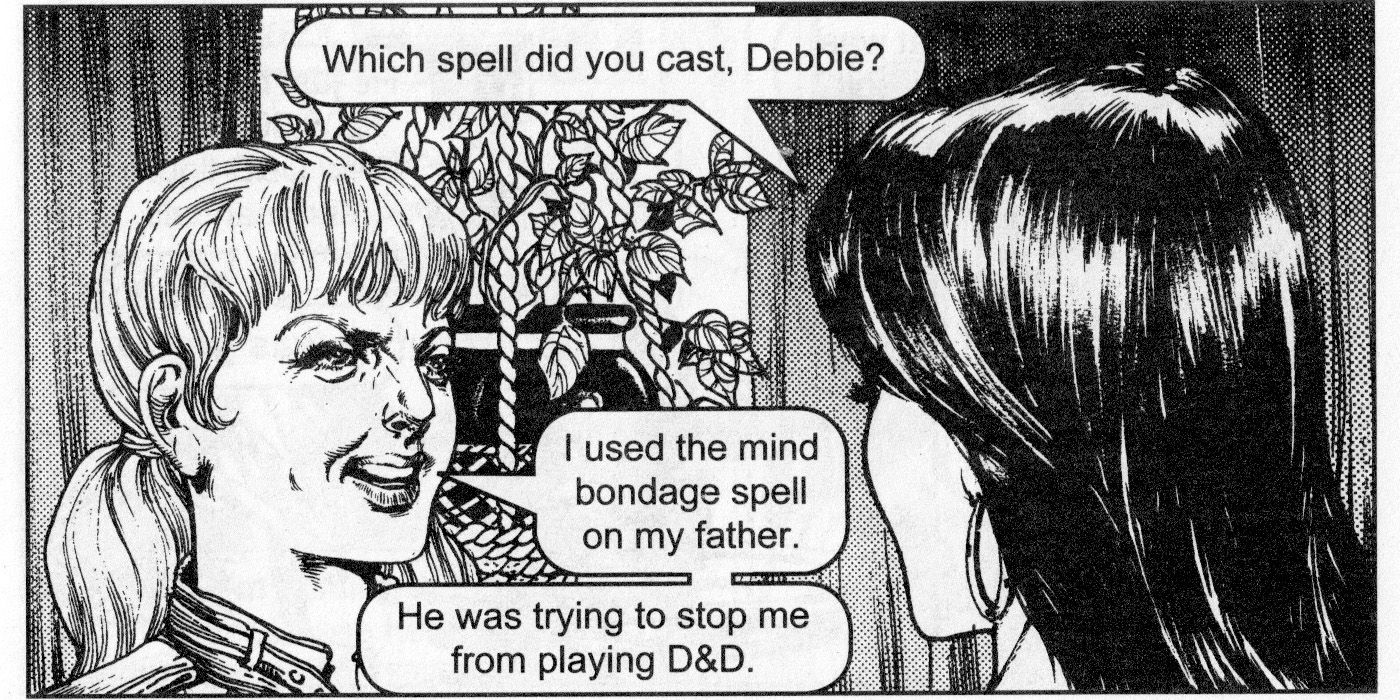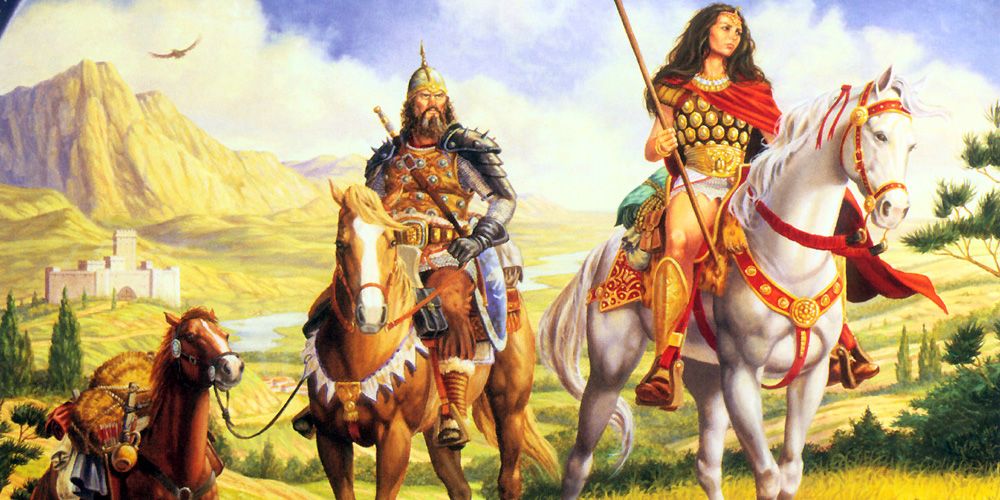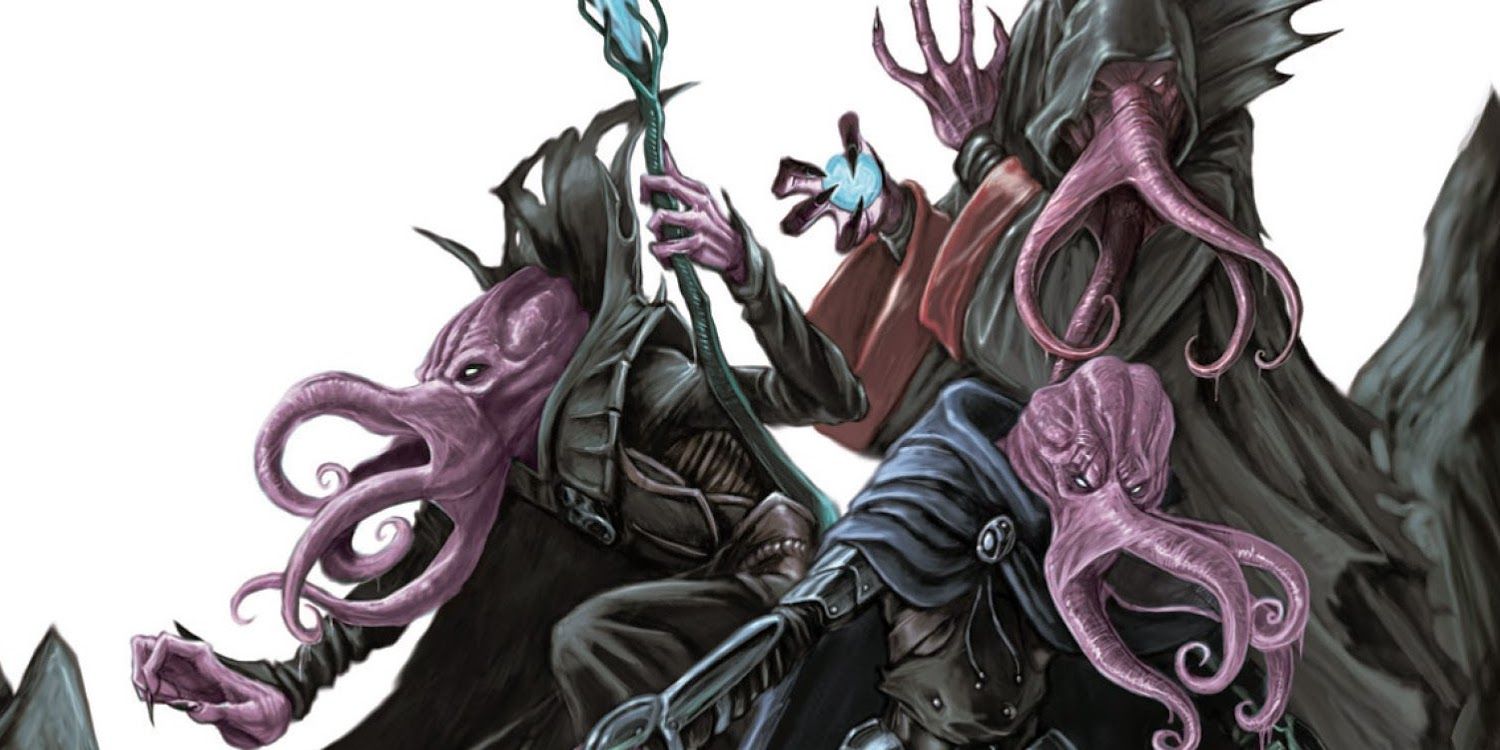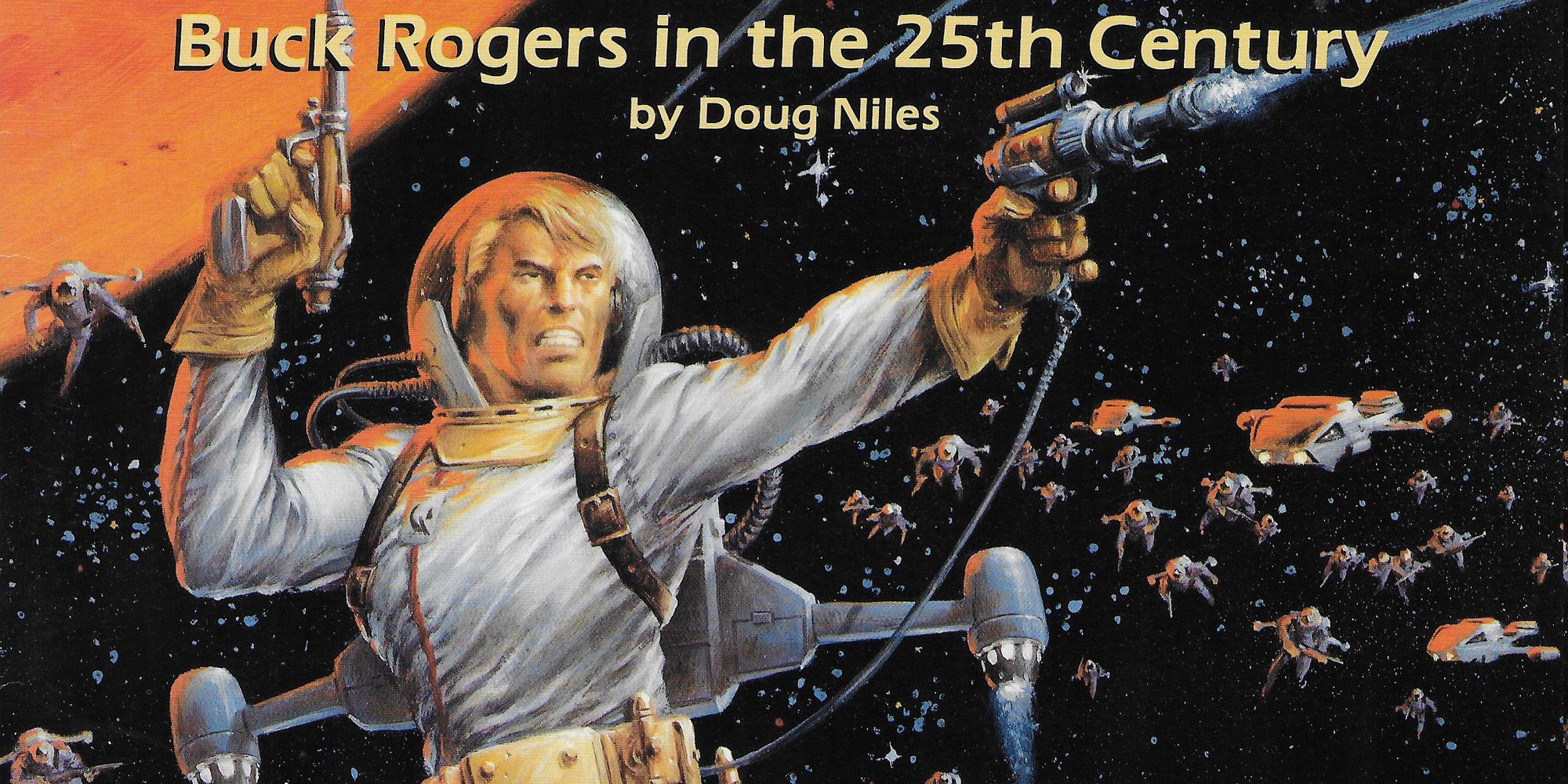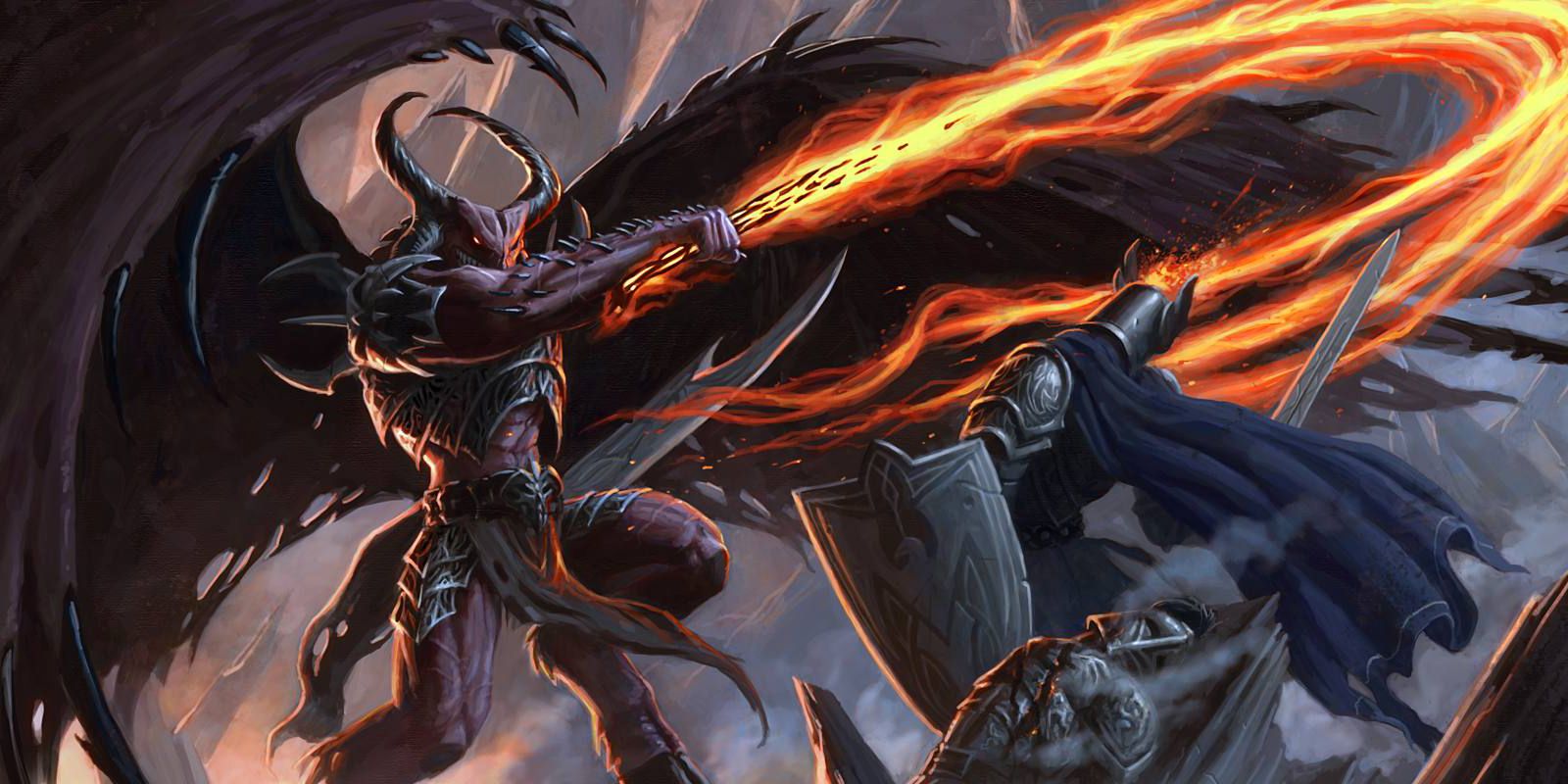Dungeons & Dragons is a game that is associated with the higher echelons of nerddom. It is a highly recognizable name that was once used to paint people a certain way in fiction. There was a time when calling someone a Dungeons & Dragons player was a way of denigrating that person and acted as a shorthand way of saying that they were a sad and lonely geek.
As nerd culture moved into the mainstream, the stigma associated with Dungeons & Dragons started to fade away. Things haven't always been so easy for our favorite tabletop RPG, as it has faced opposition from religious groups, concerned parents, and numerous lawsuits concerning copyright infringement. It's a miracle that the game has managed to survive into the present day, considering all of the adversity that has been levied against Dungeons & Dragons since its debut.
The aspect of Dungeons & Dragons that has received the most scrutiny is the violent parts of the game. Dungeons & Dragons is a game that features bloodshed, poison, demons, sorcery, and ritualistic murder. It's Dungeons & Dragons' focus on killing people and taking their stuff that has caused outrage from certain sectors of society.
We are here today to look at the controversies that almost damaged Dungeons & Dragons to the point where a Resurrection spell couldn't bring it back. From the legal troubles from Middle-Earth, to the shady reasons behind the creation of the Advanced version of the game.
Here are the 15 Controversies That Almost Destroyed Dungeons & Dragons!
15. The Lord Of The Rings Lawsuit
The single biggest inspiration for Dungeons & Dragons is J.R.R. Tolkien's The Lord of the Rings trilogy. The notion of a group of medieval fantasy stereotypes joining together and going on a perilous journey to save the world was codified by the Fellowship of the Ring. The earliest Dungeons & Dragons books featured material that closely emulated the quest of Frodo and Gandalf.
The earliest Dungeons & Dragons books actually featured creatures from The Lord of the Rings books. This drew the ire of Saul Zaentz, who had purchased many of the adaptation rights pertaining to The Lord of the Rings. Zaentz took TSR (the company that created Dungeons & Dragons) to court for breach of copyright.
The case was settled out of court, which led to TSR changing the names of certain creatures in Dungeons & Dragons; hobbits became halflings, balrogs became balor, and ents became treants.
14. Who's B.A.D.D?
In 1982, a young man named Irving Pulling took his own life by shooting himself in the chest. His family came to the conclusion that Irving's actions were motivated by his interaction with Dungeons & Dragons. Patricia Pulling took action over the death of her son, which started out with an attempted lawsuit against the principal of his school. This would lead to her creating an organization called B.A.D.D. (Bothered About Dungeons & Dragons) which existed to try and get the game banned.
The members of B.A.D.D. found help from many conservative Christian groups, who all tried to claim that Dungeons & Dragons was linked to violent crime. Their actions did lead to the game being banned from certain libraries and schools across America, though these were isolated incidents.
The influence of B.A.D.D. died down when the moral panic over Dungeons & Dragons faded away.
13. The Stormbringer Copyright Issue
The first version of Deities & Demigods caused a considerable amount of trouble for TSR. This was a book that discussed the rules concerning godhood in your average Dungeons & Dragons campaign. The rules also gave stats for the gods, so that they could present the most challenging battles of all for high-level players.
The pantheons featured in Deities & Demigods mostly consisted of gods from real-world mythology. The exceptions to this were two fictional pantheons from famous novels: the Cthulhu Mythos from the works of H.P. Lovecraft, and the Melnibonean gods from the works of Michael Moorcock.
Michael Moorcock had given TSR permission to use the gods from the Elric series in their books, but he didn't realize that the rights were already owned by Chaosium, who was a rival publisher. An agreement was reached where the Melnibonean gods could appear, but Chaosium had to be credited in the book.
12. The Cthulhu Copyright Issue
The other fictional pantheon that appeared in the original version of Deities & Demigods was the Cthulhu Mythos. These are the apocalyptic gods that are worshipped by mad cultists in the many horror stories created by H.P. Lovecraft.
The reason TSR included the evil Lovecraftian gods in Deities & Demigods was that they believed that all of Lovecraft's work had entered the public domain, as he had died over fifty years before the publication of the book.
The people at TSR were unaware that Chaosium also owned the license to Lovecraft's work. The two companies reached an agreement where the Cthulhu/Melibonean gods could be featured if Chaosium were credited.
TSR weren't keen on promoting one of their biggest competitors in their products. This led to a second printing of Deities & Demigods which removed the Chaosium-owned properties.
11. The Murder Of Leith Von Stein
There was a time when acts of violence and grisly murders were blamed on the media consumed by the perpetrators of the crime. We have seen things like heavy metal music and video games blamed for murders, which were parts of an outcry that was encouraged by the news media in an effort to blame someone for unthinkable acts that seemed to have no explanation.
Dungeons & Dragons has been blamed for several murders since its creation. In 1992, a businessman named Lieth Von Stein was killed in his bedroom by an unknown assailant. The murderer was James Upchurch, who conspired with Von Stein's stepchildren as part of a plot to get their hands on his inheritance.
The fact that the perpetrators enjoyed playing Dungeons & Dragons was brought up during the trial and spawned several books and movies based on the crime, which blamed the game for inspiring the grisly plot.
10. The Atari Lawsuit
There was a time when the best video game RPGs were based on the Dungeons & Dragons license. Games like Baldur's Gate, Icewind Dale, Planescape Torment, and the Neverwinter Nights series are still highly regarded by RPG fans to this day.
The modern Dungeons & Dragons video games haven't been held in as high a regard as their predecessors. This hasn't stopped some fierce lawsuits over who gets the right to create games based on the property.
In 2009, Hasbro filed a lawsuit against Atari over allegations that they had illegally been allowing Namco Bandai to use the Dungeons & Dragons name through sub-licensing the property. Atari never asked for Hasbro's permission to do this and had even shared confidential information in the process.
The lawsuit was settled in 2011, with the digital licensing rights to make Dungeons & Dragons games placed firmly within Hasbro's control.
9. The Inspiration For Mazes & Monsters
In 1979, a college student named James Dallas Egbert tried to take his own life by consuming poison. When he awoke the next day, he went into hiding. This resulted in Egbert being reported as a missing person, which resulted in a manhunt. Egbert's parents hired a private investigator, who discovered that Egbert and his friends used to play Dungeons & Dragons in the steam tunnels beneath his school.
The James Dallas Egbert incident inspired the creation of a novel called Mazes & Monsters, which fictionalized the events surrounding his disappearance and linked them to a thinly veiled copy of Dungeons & Dragons.
Mazes & Monsters would later be turned into a movie starring a young Tom Hanks. This movie tells the story of a youth who is inspired to commit murder by the titular game.
8. The Accusations Of The 60 Minutes Special
60 Minutes is one of the most acclaimed news/interview shows in the history of television. The history of 60 Minutes has also been littered with controversies over the accuracy of the reports on the show, which has resulted in several messy lawsuits.
Those of you who are fans of Dungeons & Dragons will likely lose a great deal of respect for 60 Minutes after watching the 1985 episode of the show that focused on the game.
The 60 Minutes episode that covered the controversies surrounding Dungeons & Dragons painted the game in as negative a way as possible. The show talks about the numerous murders and suicides that were inspired by the game... while neglecting to mention that any link to Dungeons & Dragons was tangential at best. 60 Minutes presented Dungeons & Dragons as an active component in the increasing teen suicide rate in America, without any evidence to back up their claim.
7. The John Carter Lawsuit
Dungeons & Dragons was by far the most popular game produced by TSR. This didn't stop the company from branching out into other games and genres. TSR produced several games based on science fiction and western settings, in an effort to capture people's imagination in the same way that Dungeons & Dragons had.
One of the earliest non-Dungeons & Dragons games produced by TSR was called Warriors of Mars. This was a mass-battle wargame which was set in on the fictionalized version of Mars known as Barsoom, which acted as the setting of many of the novels created by Edgar Rice Burroughs.
It seems that the people at TSR didn't know a lot about copyright law, as they neglected to ask for permission from the Burroughs estate in order to use their license. This resulted in a cease-and-desist order, which prevented Warriors of Mars from being sold. This incident almost killed TSR before Dungeons & Dragons could find an audience.
6. The NCTV Vs. The Dungeons & Dragons Cartoon
The Dungeons & Dragons cartoon is one of the most fondly remembered animated series of the '80s. This was a show where kids from the real world were trapped in a Dungeons & Dragons world, filled with monsters and magic.
Dungeons & Dragons was considered to be too violent by several groups. The many controversies surrounding the tabletop game led the NCTV (National Coalition on Television Violence) to petition the FTC (Federal Trade Commission) to include a warning at the start of each episode. The NCTV wanted the warning to state that Dungeons & Dragons (the tabletop game) had been linked to real-life murders and suicide.
The FTC refused this request, which prompted the NCTV to try and bring the issue to Congress. Their efforts were in vain and Dungeons & Dragons ran without any warnings.
5. Dungeons & Dragons = Satanism
Jack Chick was one of the most prominent Christian cartoonists who ever lived. He created comics based on numerous different issues and how they related to Christianity. These comics (known as tracts) were printed off by Christians all across America and shared with people on the streets. The Chick tracts were also commonly left in public places and placed on people's cars.
The most famous Chick tract of all deals with Dungeons & Dragons. "Dark Dungeons" tells the story of a girl who is brought into a Satanic cult that uses tabletop RPGs as a front for their activities. One of the players of the game commits suicide when their character dies, which prompts the protagonist to seek solace in Jesus Christ and burn all of her books.
4. The Dangerous Dimensions Lawsuit
When Gary Gygax was forced out of TSR, he became free to work on other projects. Gygax created a new game called Dangerous Dimensions, which was purposely designed to solve a lot of the issues that players had with Dungeons & Dragons.
When TSR learned that Gary Gygax's new game was called Dangerous Dimensions, they threatened him with a lawsuit, as they didn't want him to create a game that had the same abbreviated name as Dungeons & Dragons. Gygax relented and changed the name of the game to Dangerous Journeys.
This change wasn't enough for TSR. They took the case to court in an effort to prevent Dangerous Journeys from being sold, which ended in a settlement. Gary Gygax later claimed that the lawsuit cost TSR hundreds of thousands of dollars and contributed to the company's downfall.
3. The Mind Flayer Murders
In 1987, a young man named Daniel Kasten killed his adoptive parents over fears that they would disown him due to his poor grades in college. The original report on the murder claimed that Kasten believed that he wasn't loved by his parents, which contributed to his motive for the crime.
Daniel Kasten's defense attorney would try a different tactic in order to absolve him of criminal responsibility. Daniel claimed during the trial that he was influenced by a being known as Lord Derelith, who was a creature from a Dungeons & Dragons game that he had played in. Lord Derelith was an illithid, which is a kind of squid-headed humanoid that possesses powerful telepathic abilities.
The attempt to blame Daniel's crimes on delusions inspired by Dungeons & Dragons was unsuccessful and did not affect the verdict at his trial.
2. The Shady Buck Rogers Deal
One of the most controversial individuals among older Dungeons & Dragons players is a woman named Lorraine Williams. She took control over TSR through buying out the stock of other shareholders, which gave her the leverage to remove Gary Gygax from the company. Williams went on to be blamed for a lot of TSR's problems, despite the success that the company had for several years while she was at the helm.
One of the most controversial aspects of Lorraine Williams tenure at TSR was her focus on creating products based on the Buck Rogers license. TSR produced lots of Buck Rogers content during Williams' ownership of the company, which included board games, novels, tabletop RPGs, and video games.
This focus on the Buck Rogers license was inspired by the fact that Lorraine Williams' family owned the rights to the property, which meant that she received a cut of all Buck Rogers content released by TSR.
1. The Advanced Attempt At Screwing Someone Out Of Royalties
There was a period of time when two different versions of Dungeons & Dragons existed: Basic Dungeons & Dragons and Advanced Dungeons & Dragons.
On the surface, it would seem it that the difference between Basic and Advanced Dungeons & Dragons was the latter edition featuring more complex rules. The truth of the matter is far more sinister, as the Advanced version of the game only existed to screw one of the creators of the game out of royalty money.
Dungeons & Dragons was created by Dave Arneson and Gary Gygax. Arneson only worked at TSR for a brief period of time before leaving to pursue his own interests, though he still received a cut of the profits made by Dungeons & Dragons.
Advanced Dungeons & Dragons was made by Gary Gygax in an attempt to create a version of the game that was different enough from the original version so that he could prevent Dave Arneson from receiving royalties. Arneson took TSR to court and ultimately won a piece of the royalties on Advanced Dungeons & Dragons.
---
Can you think of any other controversies that almost ended Dungeons & Dragons for good? Sound off in the comments!

